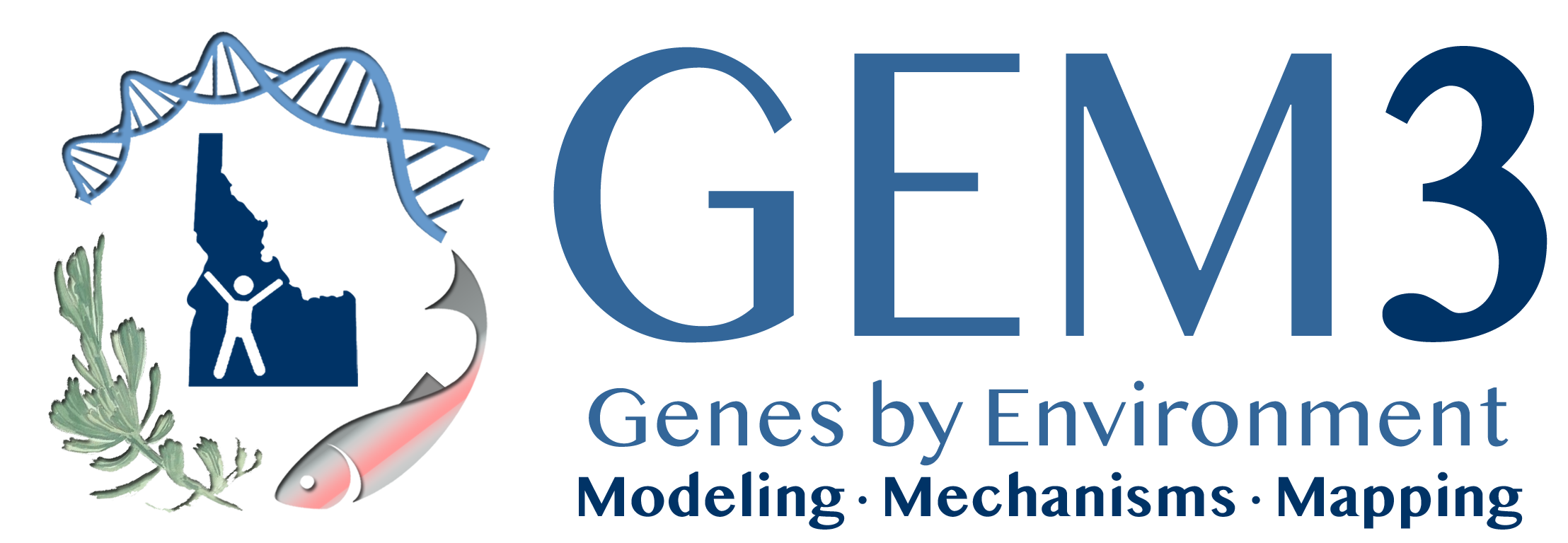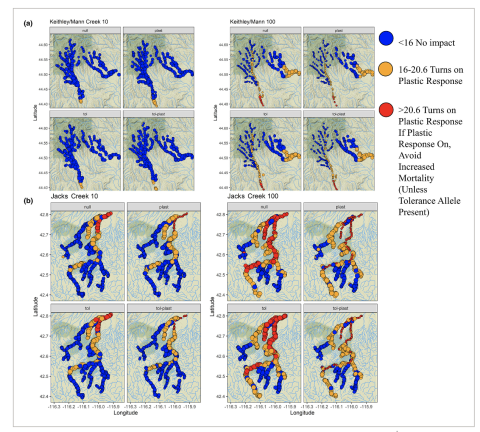Adaptive capacity can present challenges for modelling as it encompasses multiple ecological and evolutionary processes such as natural selection, genetic drift, gene flow and phenotypic plasticity. Spatially explicit, individual-based models provide an outlet for simulating these complex interacting eco-evolutionary processes. We expanded the existing Cost-Distance Meta-POPulation (CDMetaPOP) framework with inducible plasticity modelled as a habitat selection behaviour, using temperature or habitat quality variables, with a genetically based selection threshold conditioned on past individual experience. To demonstrate expected results in the new module, we simulated hypothetical populations and then evaluated model performance in populations of redband trout (Oncorhynchus mykiss gairdneri) across three watersheds where temperatures induce physiological stress in parts of the stream network. We ran simulations using projected warming stream temperature data under four scenarios for alleles that: (1) confer thermal tolerance, (2) bestow plastic habitat selection, (3) give both thermal tolerance and habitat selection preference and (4) do not provide either thermal tolerance or habitat selection. Inclusion of an adaptive allele decreased declines in population sizes, but this impact was greatly reduced in the relatively cool stream networks. As anticipated with the new module, high-temperature patches remained unoccupied by individuals with the allele operating plastically after exposure to warm temperatures. Using complete habitat avoidance above the stressful temperature threshold, habitat selection reduced the overall population size due to the opportunity cost of avoiding areas with increased, but not guaranteed, mortality. Inclusion of plasticity within CDMetaPOP will provide the potential for genetic or plastic traits and ‘rescue’ to affect eco-evolutionary dynamics for research questions and conservation applications.
Result of the (a) cool montane and (b) desert stream networks for O. mykiss gairdneri at simulation year 10 and 100 with climate change based on NorWeST stream temperature models for August. The four models represent the presence of a thermal tolerance allele (‘tol’) which reduces mortality from 40 to 20 for heterozygotes and 0 for homozygotes; habitat selection for avoiding thermally stressful patches with a trigger temperature of 18°C and then total avoidance of 20°C (‘plast’); or a combination of the two or neither (‘tol-plast’ and ‘null’, respectively). Size of circles for each patch represents the mean number of individuals present across 10 replicates, of all age classes, with red = patch avoided, yellow = patch triggers response and blue = cold patch below trigger threshold. 20% of patches were selected to show for clarity. Carrying capacity for the density-dependent, class-specific population model was set to 150,600 (cool; Keithley/Mann) and 257,000 (desert).
| GEM3 author(s) | |
| Year published |
2023
|
| Journal |
Molecular Ecology Resources
|
| DOI/URL | |
| Keywords |
Ecology
Agent Based Models
Mathematical Models
Landscapes
|
| GEM3 component |
Modeling
|
| Mentions grant |
Yes
|

